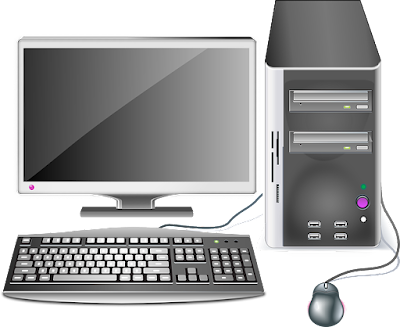- Get link
- Other Apps
- Get link
- Other Apps
In the modern world, computers have become an integral part of our daily lives. From the smartphones in our pockets to the powerful machines that run scientific research, computers are ubiquitous. But what exactly is a computer?
Defining computer
At its core, a computer is a programmable machine that processes input data according to a set of instructions to produce output. This definition covers a wide range of devices from simple calculators to complex supercomputers.
Computer components
1. Hardware:
- Central Processing Unit (CPU): Often referred to as the brain of the computer, the CPU executes instructions stored in the computer's memory.
- Memory (RAM): Random access memory temporarily stores data and instructions that the CPU needs while executing a program.
- Storage: Hard disk drives (HDD), solid-state drives (SSD), and other storage devices store data even when the computer is turned off.
- Input devices: Keyboards, mice, touchscreens, and other peripheral devices allow users to input data into the computer.
- Output devices: Monitors, printers, speakers, and other devices display or output data processed by the computer.
2. Software:
- Operating System (OS): OS manages hardware resources and provides services to software applications. Examples include Windows, macOS, and Linux.
- Applications: Software programs designed to perform specific tasks such as word processing, web browsing, and photo editing.
How computers work
Computers work on the principle of binary logic, representing data using combinations of zeros and ones (bits). These bits are organized into bytes, which are the basic units of data storage in computers.
- Input: Users input data using input devices such as keyboards, mice, or touchscreens.
- Processing: The CPU executes instructions stored in memory, manipulating data according to the logic of the program.
- Output: The processed data is displayed, printed or otherwise presented to the user through an output device.
Types of computers
1. Personal Computer (PC):
- Desktops, laptops and tablets designed for personal use.
- Versatile and suitable for a wide range of tasks from web browsing to gaming and productivity.
2. Server:
- Powerful computers are designed to store and manage data, serve applications, and handle network requests.
- Used in data centers to host websites, store files, and run enterprise software.
3. Supercomputer:
- High-performance machines were created to tackle complex scientific and engineering problems.
- Used in weather forecasting, computational biology, nuclear simulations, and other intensive tasks.
4. Embedded System:
- Computers became integrated into other devices, such as cars, appliances, and industrial equipment.
- Designed for specific purposes and often operate without human intervention.
Development of computer
Computing technology has evolved significantly since the invention of the first mechanical computer in the 19th century. From the giant room-sized machines of the mid-20th century to the sleek, powerful devices of today, computers have become faster, smaller, and more affordable with each passing year.
In short, a computer is a programmable machine that processes input data to produce output according to a set of instructions. With its ability to perform a variety of tasks quickly and efficiently, computers have revolutionized the way we work, communicate and live our lives. Understanding the fundamentals of computers is essential in today's digital age, enabling individuals to harness the power of technology to solve problems and achieve their goals.

Comments
Post a Comment